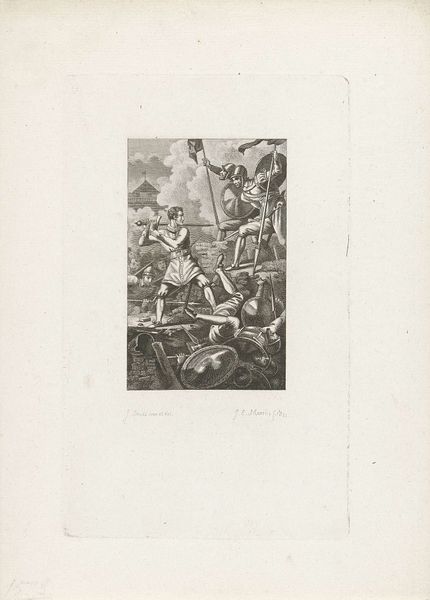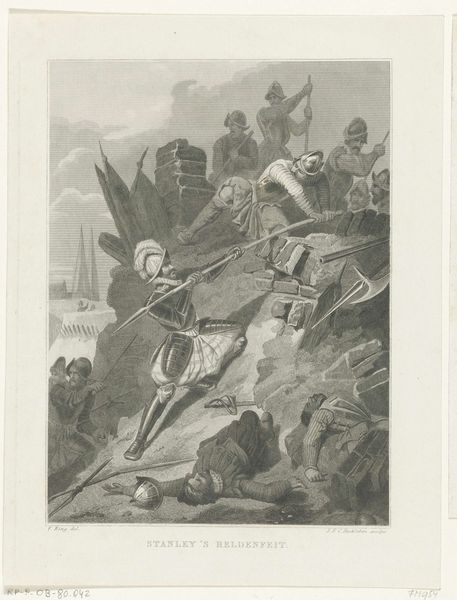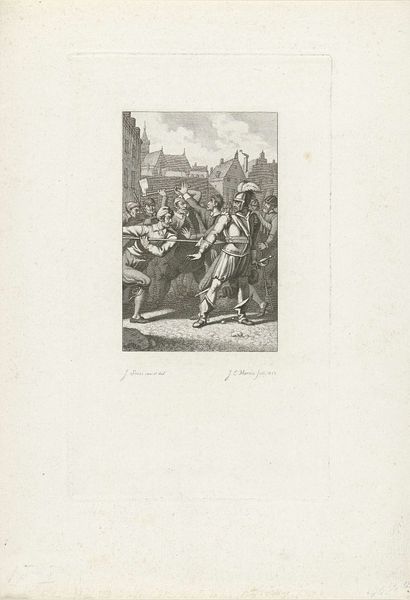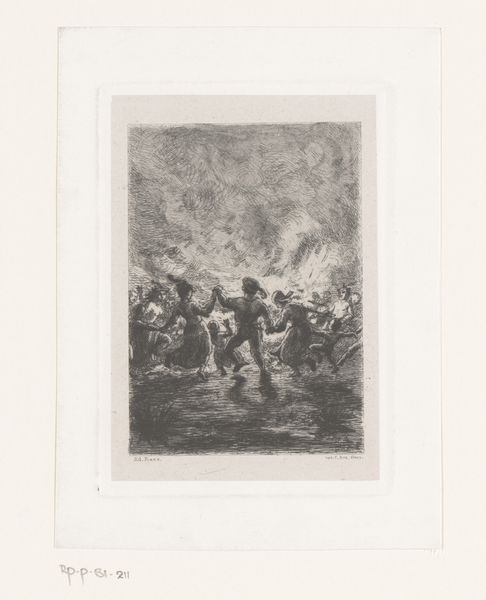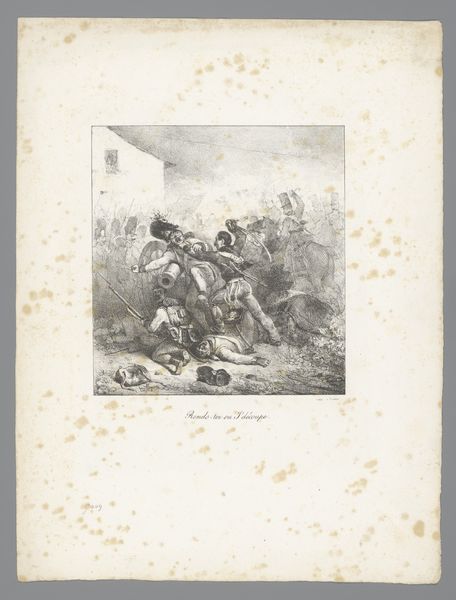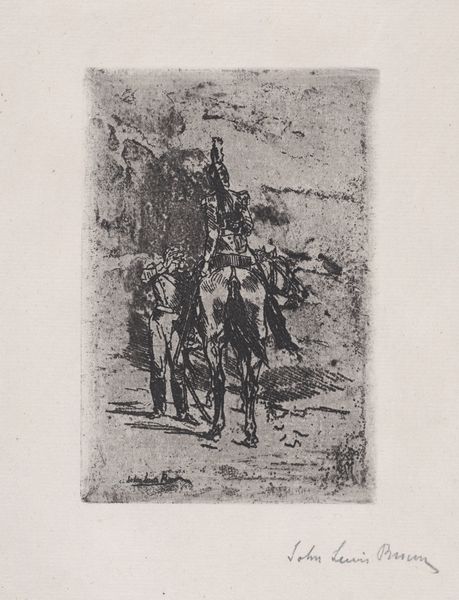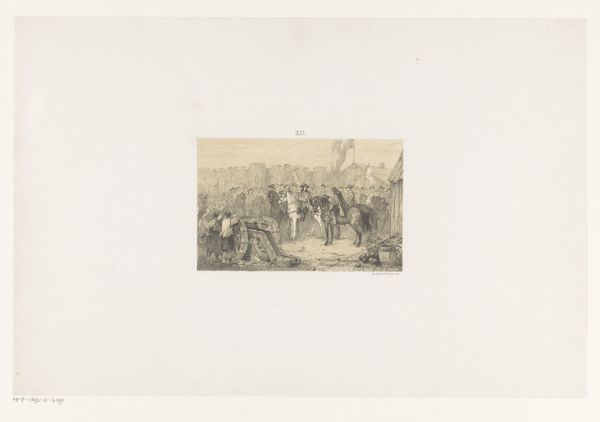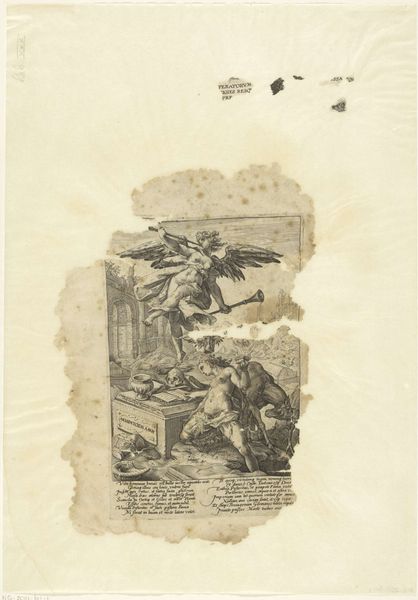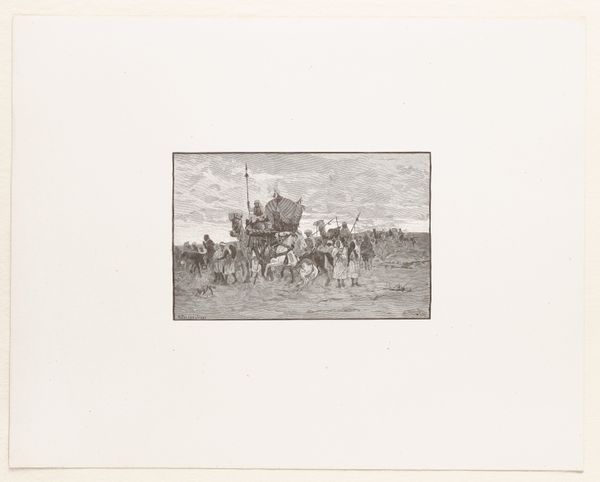
print, etching, woodcut, engraving
# print
#
etching
#
landscape
#
woodcut
#
history-painting
#
engraving
#
realism
#
monochrome
Dimensions: height 240 mm, width 190 mm
Copyright: Rijks Museum: Open Domain
Editor: Here we have "Witte van Haemstede op de Blinkert, 1304," an engraving, etching, and woodcut piece by Hendrik D. Jzn Sluyter, created sometime between 1865 and 1870. The scene has this very theatrical quality, almost like a stage play about to begin. What historical narratives do you think this piece is trying to construct or reinforce? Curator: I see it as a representation of power, not just in the figure of Witte van Haemstede, but in the visual construction of history itself. Consider how the artist positions him above the crowd, bathed in implied light, signaling his authority. How might this idealized representation of leadership impact our understanding of historical events and societal structures? It invites a critical examination of whose perspectives are privileged and whose are marginalized within historical accounts. Editor: So it's about more than just documenting an event. It is a claim about leadership and how it is visually represented. Does the artistic style contribute to this at all? Curator: Absolutely. The realism flattens history and lived experience, creating the fiction of a unified identity for the collective, yet what about the peasants, and the everyday labourers in the society. What are their experiences during the event that has been portrayed? Can they ever be incorporated in art or written about in history books? Editor: That is fascinating! It makes you realize how art doesn’t just reflect history, but actively shapes how we remember and understand it, which also effects how we interact with one another as citizens and people. Curator: Precisely. It highlights how intertwined history and identity can be. These historical depictions played a crucial role in constructing national identities and perpetuating certain ideologies, sometimes obscuring the lived realities and agency of the broader population. We should all consider this.
Comments
No comments
Be the first to comment and join the conversation on the ultimate creative platform.
